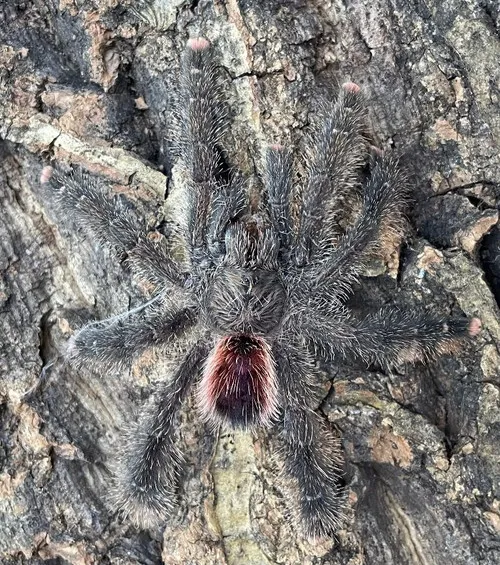Blue Pink Toe Tarantula Top 5 Facts
The Blue Pink Toe Tarantula, scientifically known as Avicularia versicolor, is a stunning arboreal tarantula highly sought after by hobbyists. Known for its vibrant coloration and relatively docile nature, this species offers a captivating experience for both novice and experienced keepers. If you are looking for a blue pink toe tarantula for sale, you’re in for a treat. This guide will provide you with essential facts to understand this beautiful creature. Discovering the world of these amazing creatures opens a new world of exotic pet keeping. This article will give you some insights to take care of them.
Appearance & Characteristics
The Blue Pink Toe Tarantula earns its name from its striking appearance. The spiderlings often display a brilliant metallic blue hue, which gradually fades as they mature, replaced by a mix of green, purple, and pink coloration on their legs and carapace. The tips of their feet are notably pink, adding to their charm. Their bodies are covered with fine hairs, and they possess two spinnerets at the rear of their abdomen, used to produce silk for webbing and egg sacs. These tarantulas are arboreal, meaning they spend most of their time in trees and other elevated areas. Understanding these characteristics is key if you’re thinking about a blue pink toe tarantula for sale.
Size and Coloration
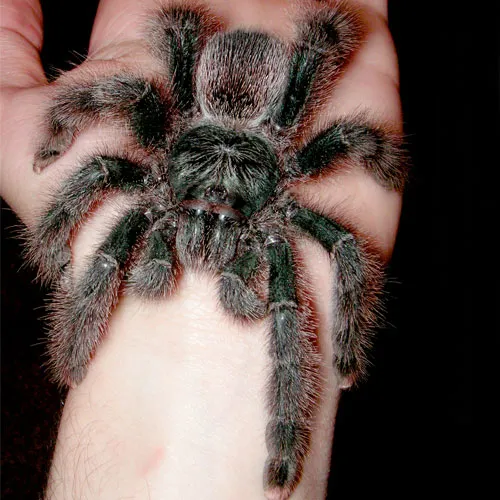
Adult Blue Pink Toe Tarantulas typically reach a leg span of up to 5 to 6 inches. The coloration changes throughout their life cycle, with spiderlings exhibiting the most intense blue. As they molt, the blue gradually diminishes, and the carapace and legs develop shades of green, purple, and pink. The contrast of colors makes them incredibly beautiful. The abdomen is usually a darker color with patterns, contributing to their overall stunning appearance. For a blue pink toe tarantula for sale, appearance is an important factor.
Identifying a Blue Pink Toe
Identifying a Blue Pink Toe Tarantula is relatively straightforward due to its unique coloration and arboreal nature. The combination of the blue or green body, pink toe tips, and a predominantly green carapace clearly distinguishes it from other tarantula species. When observing a blue pink toe tarantula for sale, be sure to look for the vibrant colors, especially the pink tips on the feet. These spiders also create distinct silk webbing in their enclosures, which further aids in identification. Always confirm the species with a reputable seller to ensure you are getting the correct tarantula.
Habitat and Distribution
Understanding the natural habitat of the Blue Pink Toe Tarantula is crucial for providing proper care in captivity. These tarantulas thrive in warm and humid environments, mimicking their native surroundings. If you have a blue pink toe tarantula for sale, you need to replicate their natural habitat. Their unique needs make them an interesting challenge for keepers.
Natural Habitat
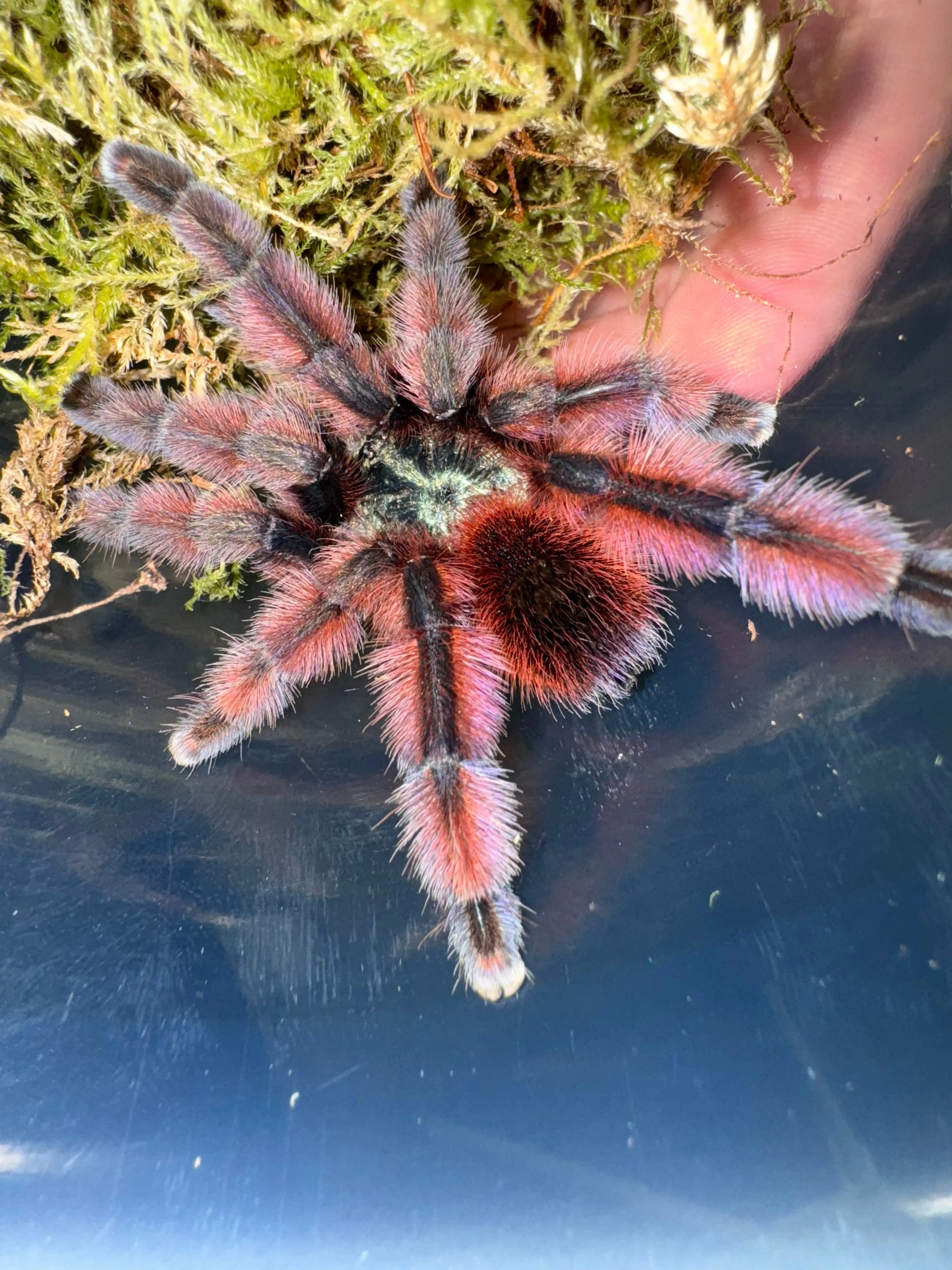
In the wild, the Blue Pink Toe Tarantula originates from the rainforests of French Guiana, Guyana, Suriname, and parts of Brazil. They are arboreal, meaning they spend most of their lives in trees, creating silk nests in the canopy. Their natural habitat is characterized by high humidity, warm temperatures, and plenty of foliage. They prefer to be in trees or other elevated areas. The spider creates a web for it’s safety and comfort. Replicating these conditions is key to ensuring the well-being of your tarantula.
Where They Are Found
Blue Pink Toe Tarantulas are primarily found in the tropical rainforests of South America, particularly in the countries of French Guiana, Guyana, Suriname, and Brazil. Within these regions, they inhabit trees, shrubs, and other elevated locations. Their natural distribution highlights the importance of providing a similar environment in captivity. If you’re looking for a blue pink toe tarantula for sale, knowing its origin helps you provide the right living conditions.
Care and Handling
Caring for a Blue Pink Toe Tarantula involves creating a suitable environment, providing proper nutrition, and handling them with care. They are relatively docile compared to some other tarantula species but still require careful attention. A well-maintained enclosure is crucial for your tarantula’s health and well-being. The proper care is important for any blue pink toe tarantula for sale.
Enclosure Setup
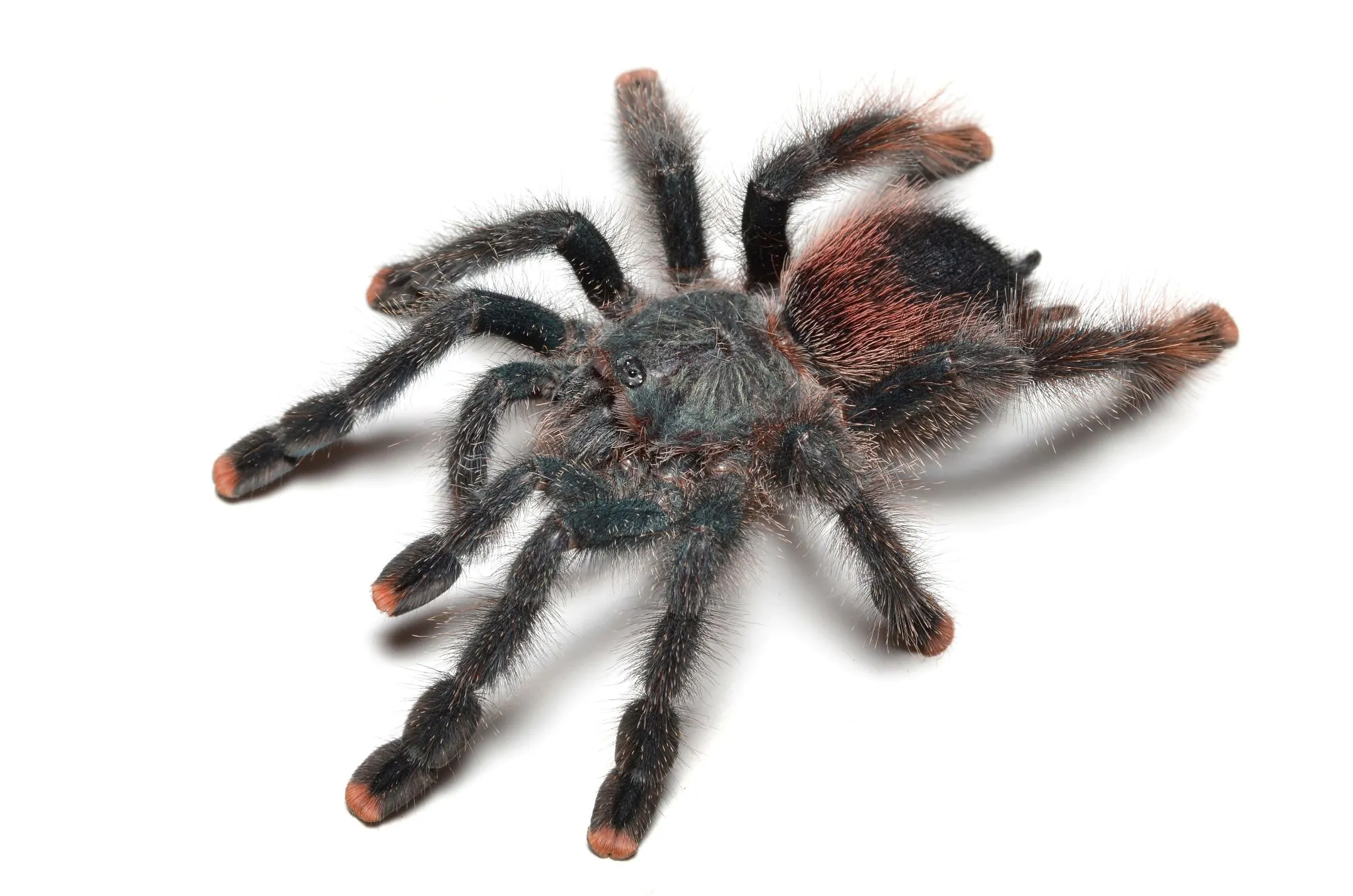
The enclosure should be at least 12x12x18 inches for an adult, with taller dimensions preferred to accommodate their arboreal nature. Provide plenty of ventilation to prevent mold and fungal growth. A substrate mix of coco fiber, peat moss, and vermiculite works well to maintain humidity. Include climbing materials such as branches, cork bark, and artificial plants to mimic their natural habitat. A shallow water dish should always be available. When you have a blue pink toe tarantula for sale, this is a key factor.
Feeding and Diet
Blue Pink Toe Tarantulas are opportunistic feeders. Feed them appropriately sized insects such as crickets, roaches, and mealworms. The prey should be no larger than the tarantula’s body. Feed juveniles 2-3 times a week and adults once a week. Always remove any uneaten prey within 24 hours. Proper feeding ensures your tarantula remains healthy and vibrant. A healthy diet is important for any blue pink toe tarantula for sale.
Health and Lifespan
Understanding the common health issues and lifespan of a Blue Pink Toe Tarantula is important for responsible pet ownership. Like all tarantulas, they can be susceptible to certain health problems. Knowing the signs of illness and providing proper care can help ensure a long and healthy life for your pet. Taking care of a blue pink toe tarantula for sale requires a comprehensive understanding of these factors.
Common Health Issues

Common health issues include dehydration, molting problems, and parasitic infections. Dehydration can be avoided by providing fresh water and maintaining proper humidity levels. Molting issues may arise if the humidity is too low or if the tarantula is stressed. Prevent parasitic infections by ensuring the enclosure is clean and the prey insects are healthy. Regularly inspect your tarantula for any signs of illness, such as lethargy, loss of appetite, or unusual behavior. If you observe any issues, consult with a veterinarian experienced in exotic animals. If you are getting a blue pink toe tarantula for sale, you need to watch for these issues.
Lifespan Expectations
Blue Pink Toe Tarantulas can live for a long time, with females living up to 10-12 years and males typically living for 3-5 years. The lifespan can vary depending on factors such as genetics, care, and environmental conditions. Providing optimal care, including a proper diet, suitable enclosure, and a stress-free environment, can contribute to a longer lifespan. If you are considering a blue pink toe tarantula for sale, remember they are a long-term commitment.
Why Choose a Blue Pink Toe?
Choosing a Blue Pink Toe Tarantula offers several benefits for both novice and experienced tarantula keepers. Their striking appearance and relatively docile nature make them a captivating addition to any collection. If you are considering a blue pink toe tarantula for sale, it is a fantastic pet choice.
Benefits of Ownership
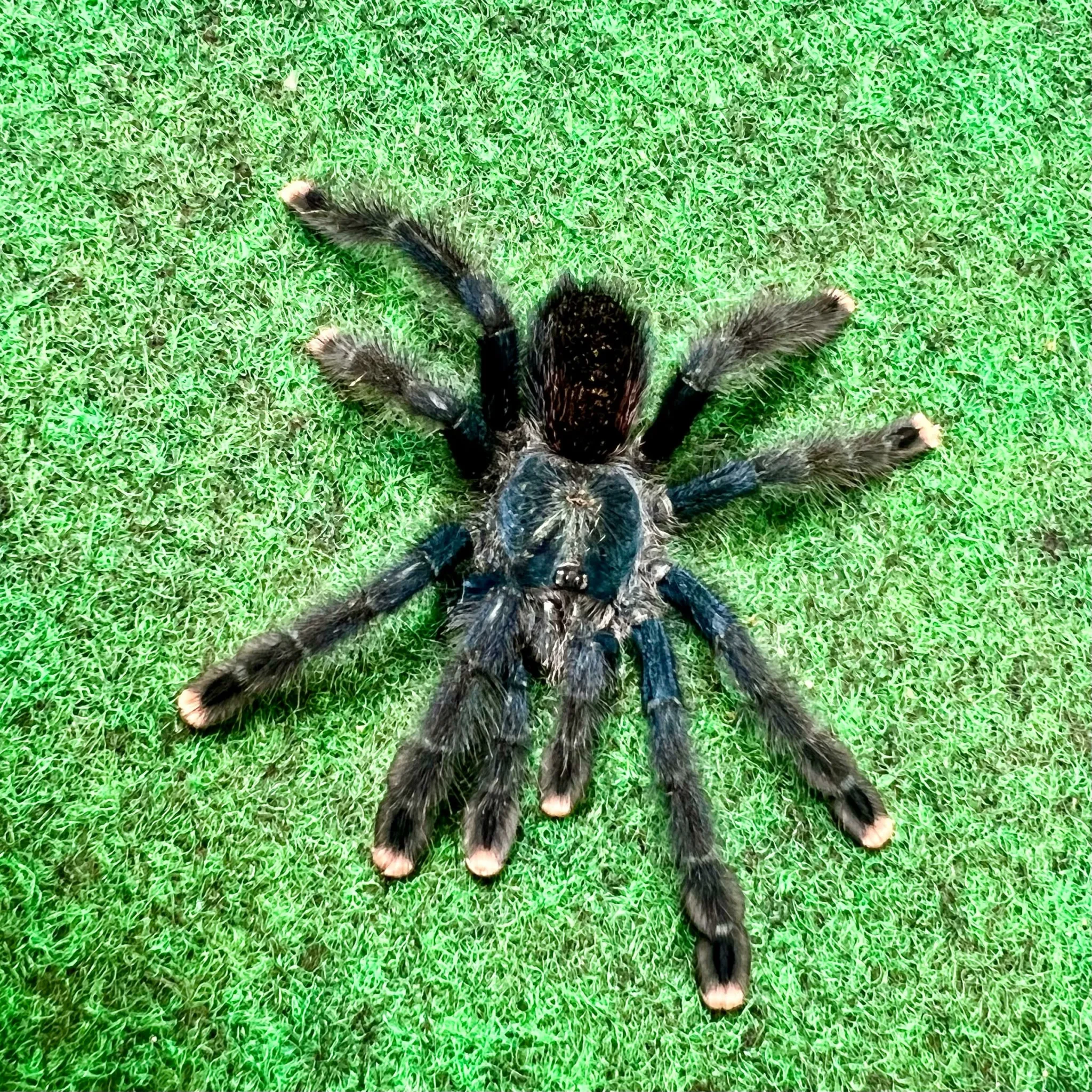
Owning a Blue Pink Toe Tarantula can be a rewarding experience. Their unique coloration and intriguing behaviors provide an excellent opportunity to learn about exotic pets. Their docile nature makes them relatively easy to handle. They are also low-maintenance pets compared to some other exotic animals, making them suitable for people with busy lifestyles. The Blue Pink Toe Tarantula offers a beautiful and interesting pet. This is a great choice if you have a blue pink toe tarantula for sale.
